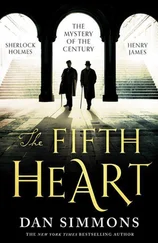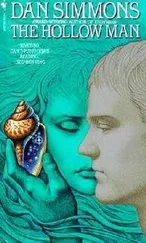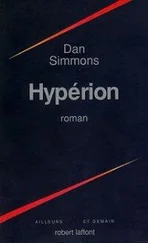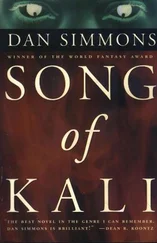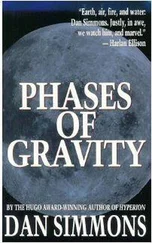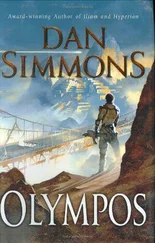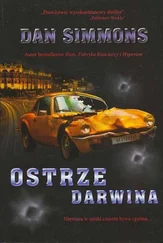She puts her hands to her cheeks.
— I have been so excited to meet you, my dear Mr. Slow Horse. I am chattering on like, how do you say it? A house aflame. My dearest apologies for forgetting to introduce… My darling Flora, I apologize to you as well.
She speaks in quick French or Belgian to the waiting, silent young woman with the so-familiar hazel eyes and then turns back to the stunned, numb Paha Sapa.
— Monsieur Slow Horse, may I present to you our daughter, my dear Robert’s and mine, and your granddaughter, Mademoiselle Flora Daelen de Plachette. Her fiancée has stayed behind in Brussels to help my father with the last of the business there but should be joining us next month in…
But the young woman has extended her hand, and all sound fades away as Paha Sapa stares at that hand. The shape and form and length and delicacy of the pale fingers—and even the mildly bitten nails—are so totally familiar to Paha Sapa that they make his old man’s heart hurt.
He takes her hand, that hand, her hand, in his.
And it is as if the bullet has been fired after all.
Bright lights explode in his skull. There is a final blinding flash, a terrible sense of all boundaries collapsing, a rushing in and flowing out, a terrible tsunami of noise that drowns all thought and sensation, and he is falling forward toward the astonished women… falling… falling… fading… gone.

HE HEARS THE RAVEN WINGS FLAPPING AND FEELS THE TALONED impact as one raven snatches up his nagi spirit-self and bears it and what is left of him aloft, away from the high-grassed earth.
The spirit of Paha Sapa’s first reaction is anger. He realizes that he has come to not believe in any continued existence after death, and now that that existence is proven to him—as the raven rises higher with its mate beside it and Paha Sapi’s nagi in its talons, flying toward the clouds and sky and Milky Way where Paha Sapa’s spirit will have to walk forevermore—he realizes that he doesn’t want to walk, even reunited with his ancestors, in the Milky Way. He wants to stay on the high-grassed Earth and talk to this woman who says she is his daughter-in-law, his lost son’s wife, and with the young woman who looks so much like his darling Rain that seeing her made his heart hurt so much it felt as if he’d been pierced by a barbed war arrow.
Paha Sapa suddenly realizes that he can see, but not through his own eyes. He is being carried by the raven and he is the raven.
It is a new and frightening experience. Paha Sapa has flown by magic before, but it has always been a lifting-up sort of flight—rising like a balloon as a boy with arms spread wide, being lifted in one of the Six Grandfathers’ giant palms, floating upward in the magical car of Mr. Ferris’s fine Wheel—and this flapping, hurtling, forward-motion-through-the-air sort of flying is breathtaking.
The raven glances below and Paha Sapa sees the battlefield falling far behind and farther below. The white Pierce-Arrow looks as tiny as a white bone lying in the grass.
He would like to have looked at that 1928 Pierce-Arrow closely, perhaps taken a ride in it. Even while flying to the afterlife in the sky, Paha Sapa thinks that his Belgian daughter-in-law’s family must be very rich to afford such a fine car.
The raven looks to its left and Paha Sapa sees the other raven flying there, its feathers so black they seem to drink the sunlight, its pinion muscles working easily. The other raven’s eye looks nothing like a human being’s eye: it is perfectly round, surrounded by small white beads of muscle that look to Paha Sapa like the sintkala waksus sacred streambed stones he sought out for his sweat lodge ceremony during his hanblečeya , and the round raven eye is an inhuman amber in color, a predator’s color, more like a wolf’s eye than a man’s. But behind that unfeeling raven’s eye, Paha Sapa catches just a second’s glimpse of the dancing blue of Long Hair’s bright eyes—the same blue eyes the young Paha Sapa looked into sixty years ago at the second of Custer’s death. So Long Hair’s nagi spirit-self is also being borne aloft.
Paha Sapa wants to shout to the Custer-carrying raven— I told you you were a ghost! —but his spirit-self has no voice.
And yet the blue human eye behind the round raven eye seems to blink at Paha Sapa in a final, bemused farewell just before that raven breaks off in its flight and heads north while Paha Sapa’s continues east and a little south. Whatever Long Hair’s destiny is after being finally released to real death—and Paha Sapa can only hope that it includes Libbie—it lies elsewhere and Paha Sapa will never know it.
Paha Sapa’s raven climbs and climbs and climbs until the horizon curves downward at both ends and the blue sky here above the clouds becomes almost black. The stars are coming out.
But then the raven ceases climbing. They are not going to the Milky Way. Not yet.
The raven looks down and Paha Sapa is not surprised to see the Black Hills dark in its surrounding heart muscle of red-ringing rock, the tiny island in the endless ocean of autumn-brown grass. Wamakaognaka e’cantge —the heart of everything that is.
Suddenly he is surprised as the raven begins to descend.
He is surprised again to see that the great sea has suddenly surrounded the Black Hills again, obscuring all sight of the land beneath the waters. He wonders if he is about to be punished by having to view yet again the Vision of the Wasichu Stone Giants rising from the Black Hills and exterminating the buffalo and his people’s way of life.
No.
There are no voices in his head, no Six Grandfathers speaking to him this time, but he suddenly understands that the great waters he sees with Wakan Tanka’s bright beam of light shining on them are the tides of time.
The raven folds its wings and dives, becoming in the graceful awfulness of that ancient motion the ultimate predator swooping down on its not-yet-visible but already hapless, helpless, and infinitely hopeless victim, and then the diving raven, wings still folded back flat against its ebony body, crashes beak-first and unblinkingly into the tidewaters of time. The water is as cold as Hell.

IN AN INSTANT the waters are gone. The skies are blue and cloudless. The raven flies steady and even some thousand feet or so above the earth. But everything is… different.
Paha Sapa sees Matho Paha , Bear Butte, ahead to the left, but the butte itself looks different. It is, he remembers in his son’s high, happy voice, a lacolith: an intrusive body of igneous rock, uplifting earlier sedimentary layers that have largely eroded away. This intrusion is of magma forcing itself into cooler crustal rock during the Eocene period. Paha Sapa has no idea when the Eocene period was, but he clearly remembers Robert telling him that Bear Butte shares a similar geological history with the Devil’s Tower in Wyoming and with the Black Hills themselves.
But now the butte rises in a changed landscape.
The nonvoice in his mind informs Paha Sapa that he is looking at his beloved Black Hills and Great Plains sometime between 11,000 and 13,000 years before Paha Sapa was born. It is late summer, early autumn, but the air is cooler, and as the raven descended, Paha Sapa sees total snow cover on the Grand Tetons and Rocky Mountains to the west. Those peaks are usually shed of all but the tiniest remnants of snow by the end of August or early September, but now they are a wall of white rising in the west.
Читать дальше



